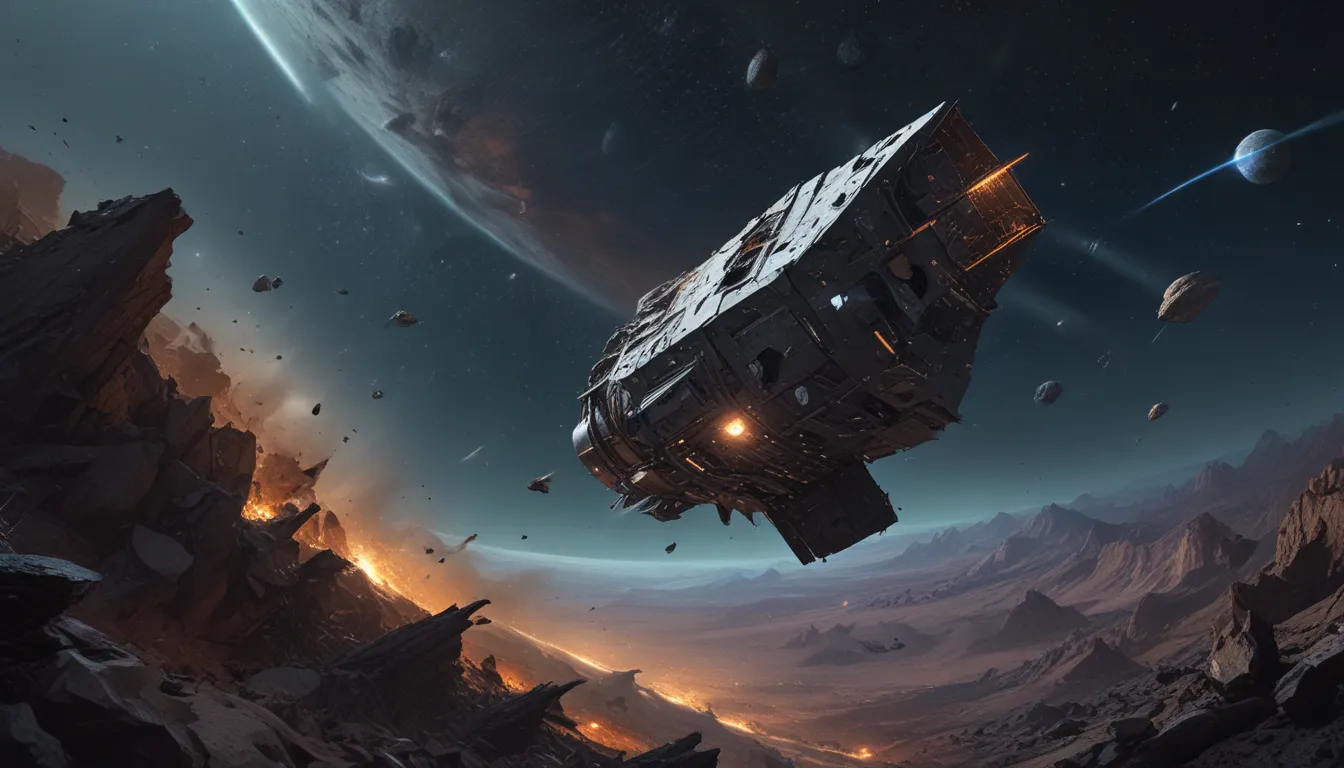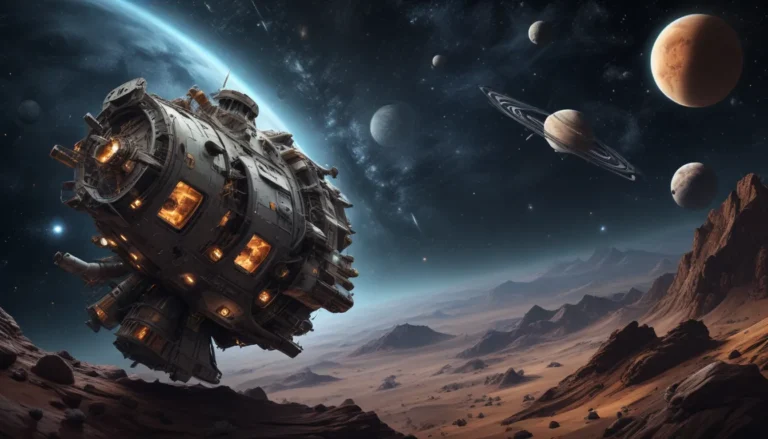The pictures we use in our articles might not show exactly what the words say. We choose these pictures to make you interested in reading more. The pictures work together with the words but don’t take their place. The words still tell you the important facts.
Space debris avoidance maneuvers are essential for ensuring the safety and sustainability of space missions. In this article, we will delve into the complexities of space debris avoidance maneuvers and uncover some fascinating insights into this crucial aspect of space exploration. From the growing threat of space debris to the innovative technologies used to track and mitigate risks, there is much to discover about this captivating topic.
Key Takeaways:
- Space debris poses a significant threat to satellites, spacecraft, and astronauts, making avoidance maneuvers crucial for ensuring their safety.
- Scientists and engineers are developing advanced technologies and international collaboration efforts to track, avoid, and repurpose space debris for future space missions.
- The future of space debris mitigation looks promising, with innovative solutions such as AI-driven avoidance systems and advanced spacecraft shielding to ensure a sustainable and debris-free space environment.
The Growing Threat of Space Debris
Space debris, also known as space junk, consists of defunct satellites, spent rocket stages, and other debris orbiting Earth. This debris poses a serious threat to operational satellites and spacecraft, potentially leading to catastrophic collisions that can disrupt communication networks, weather forecasting systems, and even jeopardize space missions.
Collisions with Space Debris
Collisions with space debris can have devastating consequences, impacting the functionality and safety of satellites and spacecraft. International space agencies and organizations track thousands of pieces of debris in real-time using radar and optical instruments to predict collisions and plan avoidance maneuvers accordingly.
The Kessler Syndrome
The Kessler Syndrome, proposed by NASA scientist Donald J. Kessler, suggests that a cascade effect of collisions between space debris could render certain orbital regions unusable. This theory underscores the importance of actively mitigating the risks associated with space debris.
Active Debris Removal
Scientists and engineers are exploring various methods of actively removing space debris, including capturing, de-orbiting, and vaporizing debris using advanced technologies like lasers. These removal efforts are essential for reducing the growing population of space debris in Earth's orbit.
Automated Collision Avoidance Systems
Modern satellites are equipped with sophisticated collision avoidance systems that leverage data from space debris tracking stations to autonomously maneuver and avoid potential collisions. These systems play a vital role in protecting satellites from the dangers posed by space debris.
Manually Controlled Debris Avoidance Maneuvers
In some cases, satellite operators manually perform avoidance maneuvers to adjust the satellite's orbit and avoid collisions with tracked debris. These precise adjustments help mitigate the risks associated with space debris and ensure the continued functionality of satellites and spacecraft.
Minimizing Space Debris Generation
Space agencies and private companies are implementing proactive measures to minimize the generation of space debris. By designing satellites and rockets with disposal plans, such as controlled atmospheric reentry or deliberate de-orbiting, they aim to reduce the impact of space debris on Earth's orbit.
International Collaboration
Collaboration between nations is essential for mitigating the risks associated with space debris. International agreements and guidelines promote responsible space operations and debris mitigation practices to ensure a sustainable and safe space environment for future space exploration.
Orbital Debris Threatens Astronauts
Space debris poses a significant threat to astronauts aboard the International Space Station (ISS). Periodic debris avoidance maneuvers are essential to safeguard the safety of the ISS crew and ensure uninterrupted operations aboard the space station.
Hazardous Space Junk
Space debris comes in various sizes, from tiny paint flecks to larger discarded satellite pieces. Even small debris traveling at high velocities can cause substantial damage upon impact, highlighting the critical need for effective space debris mitigation strategies.
Cost of Avoidance Maneuvers
Avoidance maneuvers can be resource-intensive, requiring careful evaluation of risks and costs before implementation. Satellite operators must consider factors like fuel consumption and operational resources to make informed decisions regarding debris avoidance maneuvers.
Future Space Debris Challenges
As space exploration and commercial ventures continue to expand, the volume of space debris is expected to increase. New technologies and strategies will be necessary to address the challenges posed by this growing debris population and ensure the sustainability of space activities.
Space Debris as a Resource
Some researchers are exploring the possibility of repurposing space debris as a resource for future space missions. By collecting and transforming debris into useful materials, they aim to leverage existing space assets and reduce the environmental impact of space debris.
Unknown Debris Origins
Not all space debris can be easily attributed to a specific object or mission, posing challenges for avoidance maneuvers and mitigation efforts. "Unknown" debris requires advanced tracking and monitoring techniques to ensure effective debris avoidance strategies.
Spacecraft Shielding
Advanced spacecraft designs incorporate shielding technologies to protect against damage from small debris impacts. These shields help prevent penetration and minimize the risk of critical system failures, enhancing the resilience of satellites and spacecraft in orbit.
The Role of AI in Debris Avoidance
Artificial intelligence (AI) plays a significant role in enhancing space debris avoidance strategies. AI algorithms analyze tracking data to determine optimal avoidance strategies quickly and efficiently, improving the safety and effectiveness of collision avoidance maneuvers.
The Future of Space Debris Mitigation
Scientists and engineers are continuously innovating to develop solutions that ensure the long-term sustainability of space activities. From advanced debris removal technologies to improved tracking systems, ongoing efforts promise a bright future for space debris mitigation and risk reduction.
Conclusion
Space debris avoidance maneuvers are essential for protecting valuable assets in space and maintaining the integrity of our celestial environment. The remarkable advancements in space debris mitigation techniques highlight the dedication of the scientific community to ensuring the safety and sustainability of space missions. As we continue to explore the vast expanse of space, proactive measures and innovative technologies will be crucial for preserving the future of space exploration and securing a debris-free environment for generations to come.
FAQs
Q: What is space debris?
A: Space debris consists of defunct human-made objects like old satellites, spent rocket stages, and fragments from spacecraft collisions orbiting Earth.
Q: Why is space debris a concern?
A: Space debris poses a threat to operational satellites, spacecraft, and the International Space Station, potentially causing catastrophic damage and generating more debris.
Q: What are space debris avoidance maneuvers?
A: Space debris avoidance maneuvers are planned adjustments made by satellites and spacecraft to avoid potential collisions with known or predicted debris, ensuring their safety in orbit.
Q: How do scientists track space debris?
A: Scientists use ground-based radar systems, optical telescopes, and satellite-based sensors to track and monitor space debris trajectories, enabling accurate collision predictions and avoidance maneuvers.
Q: Who is responsible for space debris mitigation?
A: Space agencies, governments, and international organizations share the responsibility for mitigating space debris risks by developing guidelines, regulations, and best practices to reduce debris creation and manage existing debris.
Q: Can space debris be removed from orbit?
A: Yes, proposed methods for space debris removal include using nets, harpoons, or lasers to capture and deorbit debris. Implementing these methods on a large scale remains a technological and logistical challenge.
Q: How can individuals contribute to space debris mitigation?
A: While individuals cannot directly mitigate space debris, they can support initiatives promoting responsible space operations and raise awareness about the issue. Advocating for sustainable practices and supporting research in space debris mitigation can help create a cleaner space environment.
Exploring the remarkable world of space debris avoidance maneuvers offers valuable insights into the challenges and solutions in managing space debris. By understanding the complexities of space debris mitigation efforts, we can appreciate the dedication of scientists and engineers in safeguarding our celestial environment and advancing the future of space exploration. As we embark on this journey through the cosmos, let us remain committed to preserving the beauty and integrity of outer space for generations to come.






